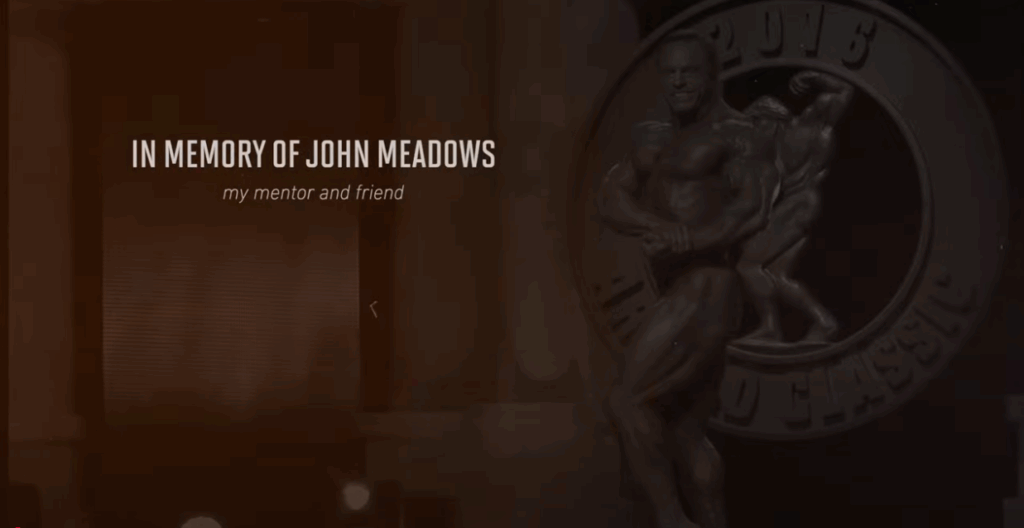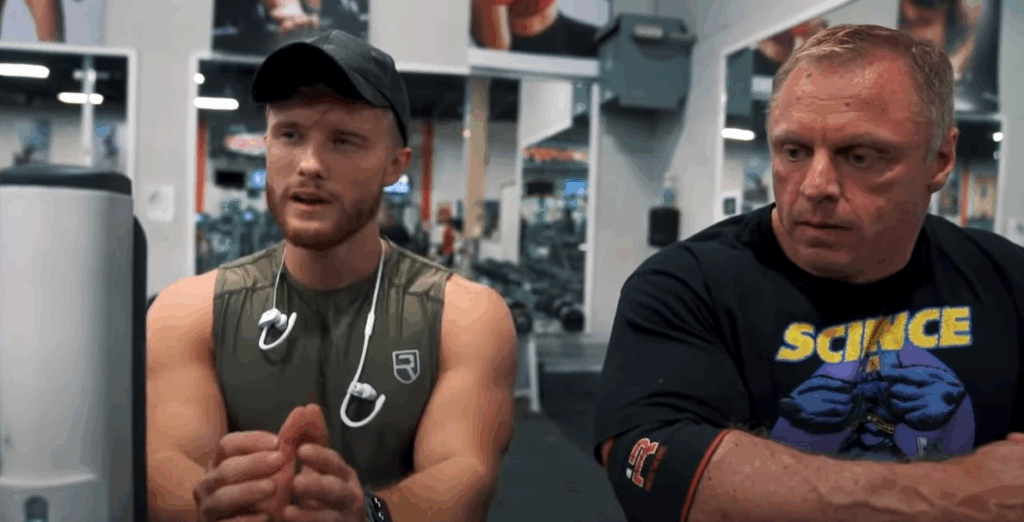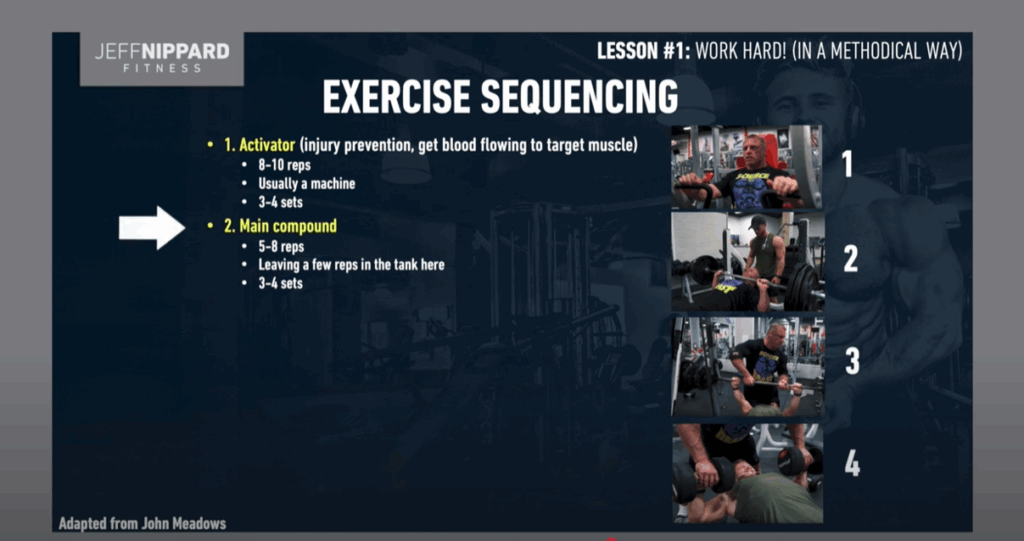Mastering Intensity with Purpose: What Training with a Bodybuilding Legend Taught Me
In the world of bodybuilding, few names command as much respect as the late John Meadows. Known as the “Mountain Dog,” John wasn’t just a professional bodybuilder—he was also a mastermind of intelligent training design. I had the rare opportunity to train under his guidance, and what I learned in one session with him forever changed the way I view training intensity, structure, and mindset.
While many assume that training with a top-tier coach means a brutal, no-mercy approach, the reality was far more strategic. Yes, the effort was immense—but it was applied with precision. What looked like chaos to the untrained eye was, in truth, a finely tuned system for maximizing progress while minimizing burnout and injury.

Effort Alone Isn’t Enough—Timing It Right Is Everything
One of the first lessons I learned that day was the importance of “calculated intensity.” Most people misunderstand what hard training really looks like. They believe that pushing to the brink in every set is the secret to growth. But John showed me that what really matters is when you apply that effort.
In his system, most exercises are built around one truly all-out working set. Leading up to it, you gradually build up volume with submaximal sets—nothing too taxing, just enough to accumulate blood flow and prepare your body. When you finally reach the peak weight—usually targeting around 8 reps—that’s when it’s time to go all in.
What made this approach so effective was its psychological sustainability. Knowing you only had to go to the limit once per exercise helped you mentally gear up for that single push. Compare that to five max-effort sets in a row, and the difference in mental wear and tear becomes obvious.
Appropriate Intensity: The Missing Link in Most Training Programs
Too often, trainees either don’t train hard enough or train too hard, too often. The real secret lies in learning how to push at the right time. John called it “appropriately applied effort”—a simple yet powerful phrase that stuck with me.
During our leg workout, for example, the volume crept up gradually. By the time we reached our final set, I was prepared—physically and mentally. That last set wasn’t just a physical test; it was a mental war zone. Deep burn, partials, iso-holds—it was brutal, but it was also structured. And when I hit that last rep, I knew I had truly emptied the tank.
The Four-Phase Training Model: A Blueprint for Smarter Gains
What impressed me most was John’s unique method for organizing a training session. He didn’t just throw together random exercises. His workouts followed a four-phase progression designed to maximize hypertrophy while protecting the joints and connective tissue.
Here’s a breakdown of his system:
- Activation Phase
The session always began with a joint-friendly movement to promote blood flow, improve mobility, and minimize injury risk. Think of light machine presses or leg curls—just enough to “wake up” the muscle without draining you. - Primary Tension Movement
This was typically a heavy compound lift done for low to moderate reps. The goal was to load the muscle under tension, but still keep a few reps in the tank. For example, incline barbell press or hack squats with strict control. - Pump Phase
This is where most people think “the magic” happens—intensity techniques like drop sets, slow eccentrics, iso-holds, and partials. These sets took you to true failure and beyond, but by saving them for later in the workout, you were already primed and less likely to get hurt. - Stretch Phase
John always finished with a stretch-focused movement—think dumbbell flyes or deep lunges—to elongate the muscle under tension. Not only does this feel incredible, but it may also offer unique hypertrophic benefits, especially when performed after a pump.
This model struck a perfect balance between science and intensity, giving you structure without sacrificing effort.

Effort is Earned, Not Wasted
There’s a misconception in fitness culture that more is always better. More sets, more volume, more pain. But this often leads to overtraining or injuries. What John taught me was that there is an effort threshold required for growth—but exceeding that threshold every session isn’t productive.
Effort should be earned and intentional. The final hard set wasn’t just about grinding—it was about earning the right to push hard by properly preparing the body. That’s why his clients saw incredible results while staying relatively injury-free.
The Mental Game: Training with Purpose
People often ask me what it’s like to train that hard. My honest answer? It’s tough—but it’s bearable when you know there’s a system behind it. You’re not blindly suffering. You’re climbing toward a peak, and when it’s time to push, you push with everything you’ve got.
That type of training fosters mental toughness. You walk away knowing you gave your all, but you’re also excited to come back and do it again. Burnout doesn’t come from effort—it comes from chaotic, purposeless effort.
Work Ethic: The Ultimate Equalizer
We can’t all have the same genetics, but effort is one variable you can always control. In any sport, hard work often separates first from third place. And in bodybuilding—where progression is measured over months and years, not days—work ethic is the deciding factor.
Training with John reminded me that success doesn’t require endless hours in the gym or over-the-top suffering. What it does require is a willingness to give 100% when it matters most—and the wisdom to know when that moment is.

Final Thoughts: Lessons That Last a Lifetime
John Meadows left a legacy that goes far beyond sets and reps. He taught an entire generation of lifters how to train hard and smart. That day in the gym with him wasn’t just a tough leg workout—it was a masterclass in how to pursue excellence with intention.
If you’re looking to break through a plateau or simply make your training more effective, take this lesson to heart: apply maximum effort, but do it when it counts most. Build up to your hardest set. Execute with focus. Recover with purpose.
And never forget—intelligent effort beats blind effort, every single time.



